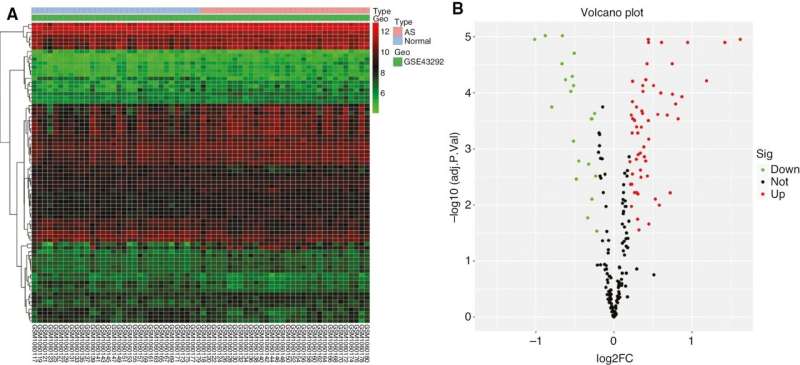This article has been reviewed according to Science X's editorial process and policies. Editors have highlighted the following attributes while ensuring the content's credibility:
fact-checked
proofread
Immune infiltration in atherosclerosis is mediated by cuproptosis-associated ferroptosis genes

In a new study published in the journal Cardiovascular Innovations and Applications, the authors identified cuproptosis-associated ferroptosis genes in the atherosclerosis microarray of the Gene Expression Omnibus (GEO) database and explored hub gene-mediated immune infiltration in atherosclerosis. Immune infiltration plays a crucial role in atherosclerosis development.
Ferroptosis is a mode of cell death caused by the iron-dependent accumulation of lipid peroxides. Cuproptosis is a recently discovered type of programmed cell death. No previous studies have examined the mechanism of cuproptosis-associated ferroptosis gene regulation in immune infiltration in atherosclerosis.
The qualified atherosclerosis gene microarray was researched in the GEO database, integrated with ferroptosis and cuproptosis genes, and calculated with the correlation coefficients. The authors then obtained the cuproptosis-associated ferroptosis gene matrix and screened differentially expressed genes. Subsequently, they performed Gene Ontology and Kyoto Encyclopedia of Genes and Genomes enrichment analyses and protein–protein interaction network analysis of differentially expressed genes.
The authors also screened hub genes according to the Matthews correlation coefficient (MCC) algorithm. The authors conducted enrichment analysis of hub genes to explore their functions and predict related microRNAs (P<0.05). The authors also used the single-sample gene set enrichment analysis (ssGSEA) algorithm to analyze the relationships between hub genes and immune infiltration, and used immune-associated hub genes to construct a risk model.
Finally, the authors used the drug prediction results and molecular docking technology to explore potential therapeutic drugs targeting the hub genes.
Seventy-eight cuproptosis-associated ferroptosis genes were found to be involved in the cellular response to oxidative and chemical stress, and to be enriched in multiple pathways, including ferroptosis, glutathione metabolism, and atherosclerosis. Ten hub genes were identified with the MCC algorithm; according to the ssGSEA algorithm, these genes were closely associated with immune infiltration, thus indicating that cuproptosis-associated ferroptosis genes may participate in atherosclerosis by mediating immune infiltration.
The receiver operating characteristic curve indicated that the model had a good ability to predict atherosclerosis risk. The results of drug prediction (adjusted P<0.001) and molecular docking showed that glutathione may be a potential therapeutic drug that targets the hub genes.
The conclusion was that cuproptosis-associated ferroptosis genes are associated with immune infiltration in atherosclerosis.
More information: Boyu Zhang et al, Immune Infiltration in Atherosclerosis is Mediated by Cuproptosis-Associated Ferroptosis Genes, Cardiovascular Innovations and Applications (2023). DOI: 10.15212/CVIA.2023.0003





















